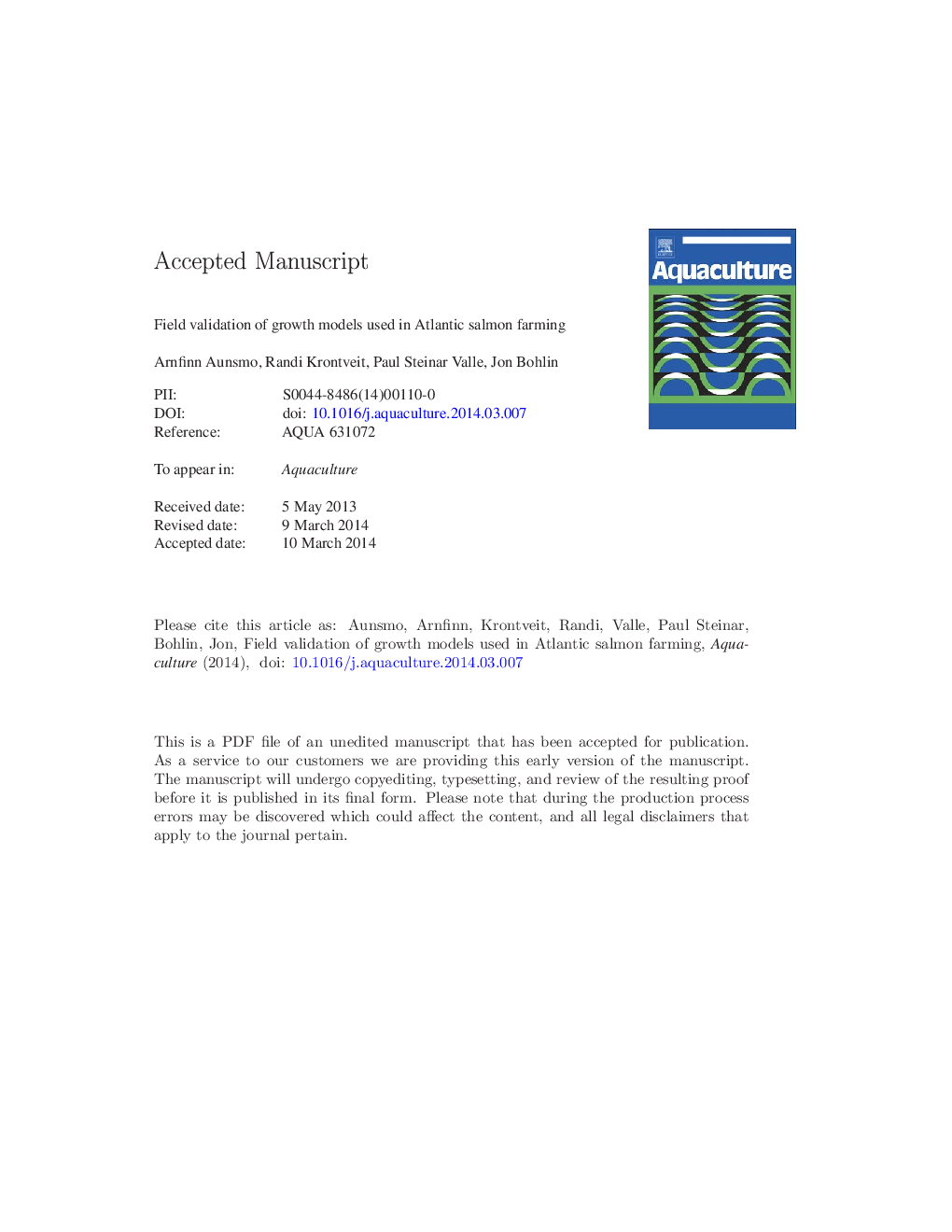| Article ID | Journal | Published Year | Pages | File Type |
|---|---|---|---|---|
| 8495118 | Aquaculture | 2014 | 33 Pages |
Abstract
Our findings indicate that ADG was strongly associated with harvest weight and was thus deemed unsuitable for describing growth in Atlantic salmon. SGR was also associated with fish size and biased towards small fish when fish of uneven stocking size were compared. The TGC, SGR and the EGI models were all moderately associated with harvest weight, and the same three models were more strongly associated with mean temperature and mean day-length. These models might therefore present bias when used to compare growth in varying environmental conditions. The EGI was considered the most robust model overall for predicting growth at different sizes exposed to variable abiotic exposure such as temperature and light. Finally, the study suggests that the robustness of growth models can be improved by accounting for non-linear effects on growth and including abiotic factors such as temperature, light, and latitude.
Related Topics
Life Sciences
Agricultural and Biological Sciences
Aquatic Science
Authors
Arnfinn Aunsmo, Randi Krontveit, Paul Steinar Valle, Jon Bohlin,
